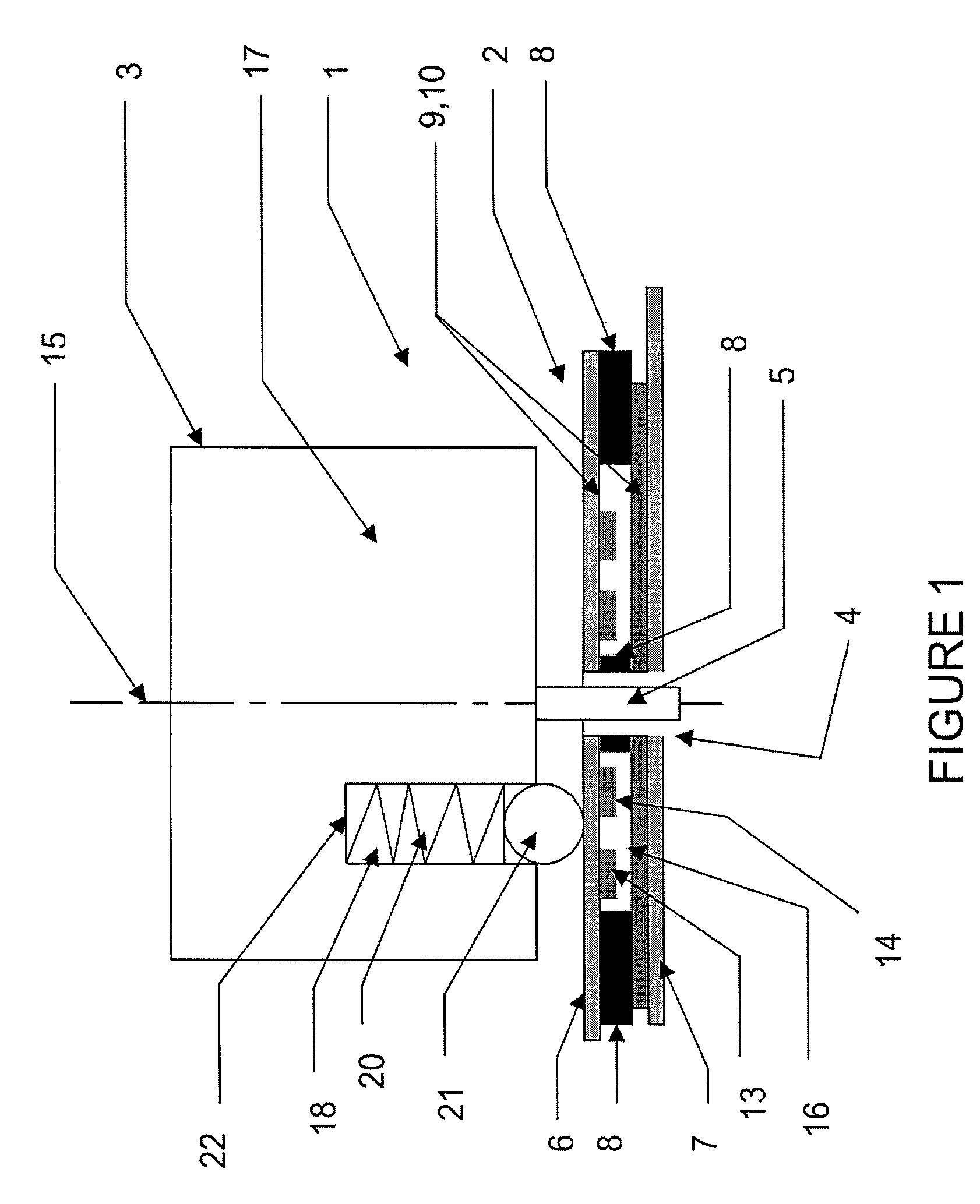Rotary electrical switching device
- Summary
- Abstract
- Description
- Claims
- Application Information
AI Technical Summary
Benefits of technology
Problems solved by technology
Method used
Image
Examples
Embodiment Construction
[0022]Referring to FIG. 1, there is shown a rotary electric switch 1 comprising a base 2 and a rotary actuator 3, the base 2 having a through-hole 4 at its centre, in which an axle 5 of the rotary actuator 3 is mounted, a first substrate layer 6, and a second substrate layer 7 overlying the first substrate layer 6 so as to be parallel thereto. The two layers 6, 7 are furthermore separated apart by an adhesive 8, which joins the radially outer and inner edges of the substrate layers 6, 7 in a sealing fashion. Each of the substrate layers 6, 7 has a first surface 9, 10 which faces the other substrate layer 6, 7 and a second surface 11, 12 opposite said first surface 9, 10. The first surface 9 of the first substrate layer 6 has a pair of concentric, radially spaced, generally arcuate conducting tracks 13, 14 mounted thereon, which are centred on the axis of rotation 15 of the rotary actuator 3, and the first surface 10 of the second substrate layer 7 has a conducting plate 16 mounted t...
PUM
 Login to View More
Login to View More Abstract
Description
Claims
Application Information
 Login to View More
Login to View More - R&D
- Intellectual Property
- Life Sciences
- Materials
- Tech Scout
- Unparalleled Data Quality
- Higher Quality Content
- 60% Fewer Hallucinations
Browse by: Latest US Patents, China's latest patents, Technical Efficacy Thesaurus, Application Domain, Technology Topic, Popular Technical Reports.
© 2025 PatSnap. All rights reserved.Legal|Privacy policy|Modern Slavery Act Transparency Statement|Sitemap|About US| Contact US: help@patsnap.com



